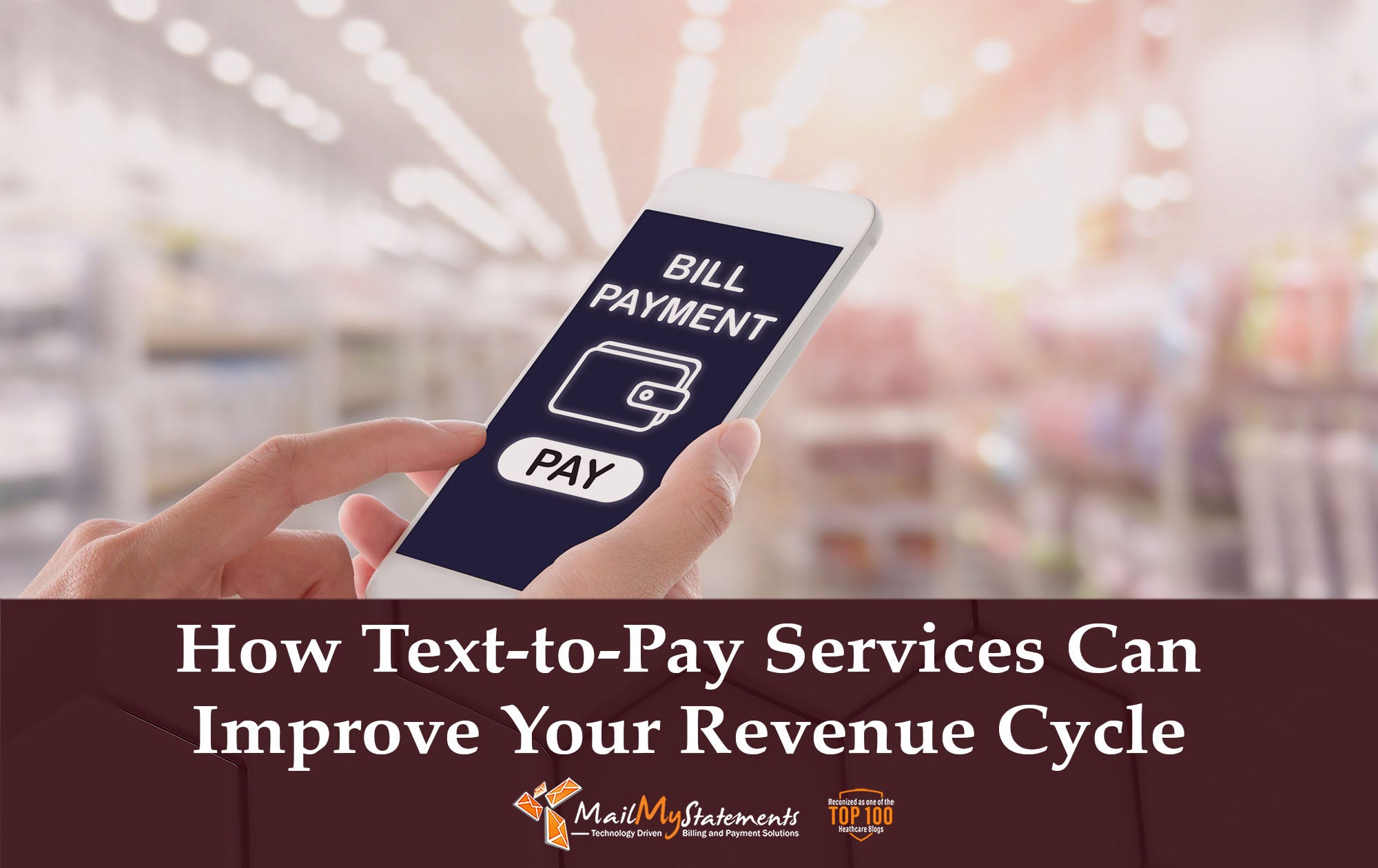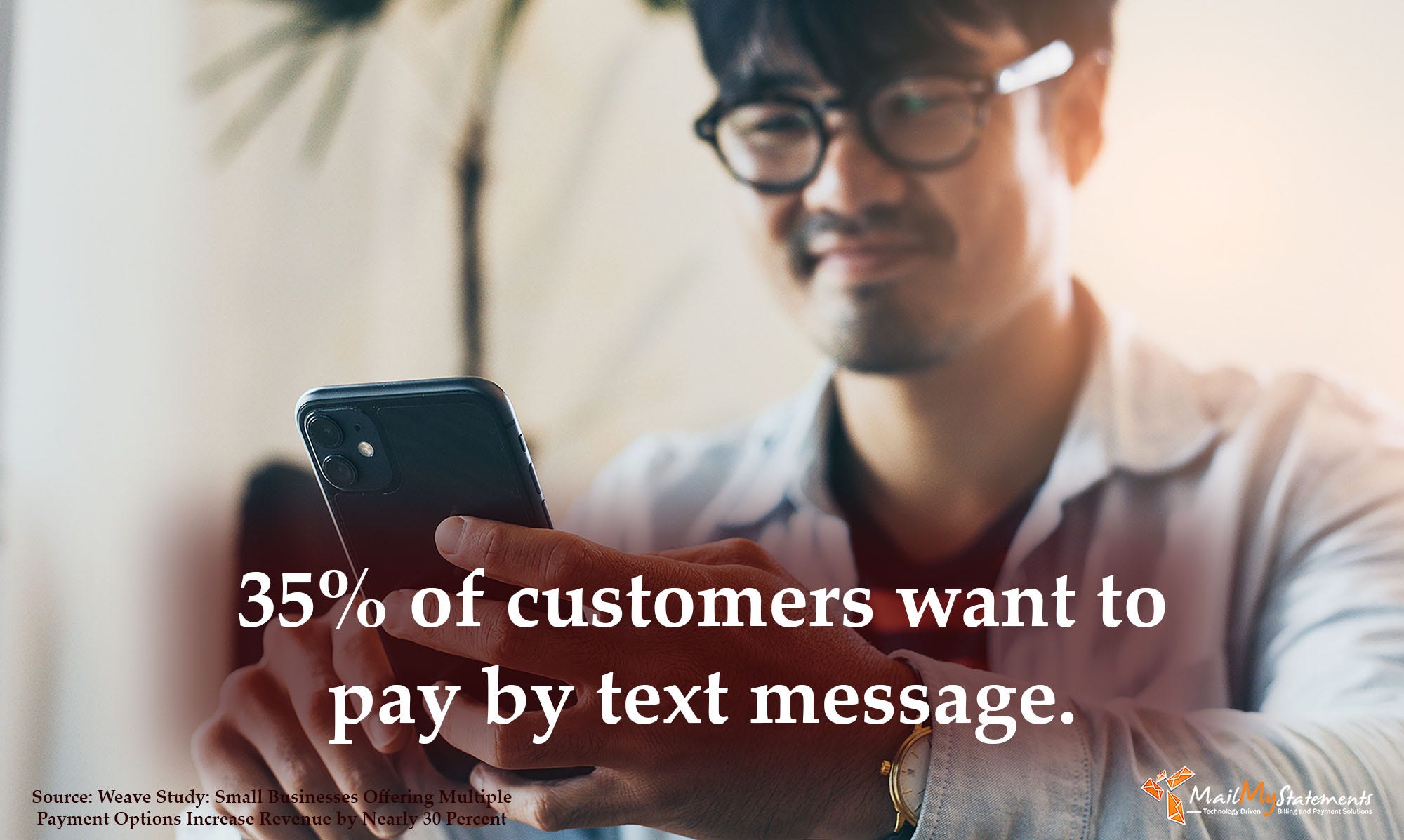How Text-to-Pay Services Can Improve Your Revenue Cycle

The prevalence of smartphones around the globe has burgeoned in the past decade, and we’ve since developed quite the addiction to match. In September 2019, just over 260 million Americans owned smartphones. On average, Americans check their phone about 96 times per day (that’s once every ten minutes).
Affordability, necessity for daily life, and improvements in high-speed internet access have made iPhones and Androids something we can’t function without. Unlike shag carpets, pajama jeans, and personal device assistants, smartphones aren’t at risk of falling out of fashion next season.
Those with mobile phones can do more with their device than ever before, and the wisest medical providers have started to catch on. By incorporating a text-to-pay function into their billing strategy, these medical providers are reaching consumers where they already spend most of their time and positioning themselves as leaders in the competition for the best consumer experience.
Text-to-pay service is an emerging necessity as healthcare practices seek improvement to payment collection systems, and any provider can adopt this strategy.
What Is Text-to-Pay?
Text-to-pay is a billing service that functions just like it sounds: it allows patients to receive a notification about their medical bill via SMS text and gives them the option to pay with a few taps on their smartphone. In addition to being more immediate than a phone call, email, or paper bill, response rates are much higher for texting than they are for other mediums. This rapid two-way communication between your practice and your patient can build trust, secure faster payments, and tighten your practice’s billing cycle from start to finish.

There’s no need to upgrade to the latest billing technology or adopt entirely new software to get your patients to pay their bills faster. Text-to-pay services take advantage of the already-built-in capabilities of mobile phones and require no additional cost or effort from the consumer.
Text-to-pay is a great billing strategy to integrate into any portfolio of bill payment options. But what exactly makes text-to-pay stand out from other payment methods? Read on for four reasons why a text-centered payment option is a win-win for you and your clientele.
How Text-to-Pay Can Improve Your Practice
1. Immediate reminders
Not all people have notifications on their phones for their email. Especially among younger generations who might not check their email as frequently, glossing over text-to-pay as a billing option could mean wasting multiple days of your billing cycle just to wait for your patient to open their message. Because the text-to-pay format is immediate, patients will be encouraged to pay their bills faster. It’s also less work for your practice to send a reminder than a whole extra mailing.
2. Easier communication
When a patient has a question about their bill, it’s easy to set the document aside to “deal with it later” when it’s in paper or electronic format. Those famous last words work to the detriment of both the patient and the provider. The patient forgets to pay their bill and can incur a late fee if they miss their deadline, and the provider (specifically the billing department) has to waste time re-sending statements, calling the patient, or taking on extra fees to encourage payments.
With text-to-pay, patients can call their provider by tapping the phone number listed in the SMS message. Some text-to-pay services can also be set up to accept text-message responses from patients. So, instead of calling, a patient can simply reply to the SMS message with questions or comments.
3. Quicker collections

Patients with text-to-pay can call their provider with one tap of their phone and pay their bill immediately with just a few extra taps.
Instead of a collections process that takes several days and rounds of back-and-forth to get questions answered and errors corrected, text-to-pay is a more immediate billing strategy that can improve your bottom line. Response rates of texting are consistently higher than response rates of phone, email, and mail statements. By reaching your patient where they already spend most of their time, you remove part of the friction that typically exists within the billing process.
Text-to-pay makes it easy to pay a bill on the go as well, whether you’re at the grocery store, during the commercial break of a TV show, or even in traffic at a red light. This way, patients have no reason to delay their monthly payments, and the immediacy of text-to-pay provides them with peace-of-mind knowing that there’s one less item on their to-do list.
4. Less Paper
Although everyone should support the postal service, mailing paper statements is expensive, and it burns through a lot of paper that probably won’t ever get recycled. Providers can easily be part of the solution to our planet’s ongoing environmental troubles by encouraging as few paper statements as possible.
Because text-to-pay is such an easy alternative to paper statements (and because nearly 80% of the population owns a smartphone), users that would typically prefer paper mailings might be encouraged to try a paperless option. Never underestimate the number of people who would be willing to try something new if presented with the opportunity!
One piece of advice with this feature: it’s crucial to let your patients know in advance that your practice offers a text-to-pay option. If your text reminders come to a patient who isn’t familiar with this particular billing service, it’s possible they could think it’s spam and ignore the message entirely.
Integrate Text-to-Pay Into Your Omnichannel Billing Strategy
Your commitment to a smooth patient experience shouldn’t end as soon as your patient walks out of your office. It should continue all the way through the end of their statement payment process and, if possible, through to their next scheduled appointment. Beyond all the positive aspects of the text-to-pay services mentioned above, the simple truth is that a modern billing strategy will set you apart from your competition.
If your practice wants to stay ahead of the technology curve by offering patient-preferred payment options, contact MailMyStatements today to learn about our simple onboarding process.

Derek Griffin is the VP of Sales and Business Development for MailMyStatements. He has over 13 years of experience as a healthcare sales executive, is experienced in multiple healthcare related fields from front office to billing and collections, and has worked in various roles within Optum, a UnitedHealth Group company and AdvanecedMD. He loves spending free time with his wife and kids, whether it is coaching the soccer team, attending dance recitals, or fixing bikes.
You can follow Derek on Twitter @Derek_Griffin1



Comments
Post a Comment